ProjectReport of the 2014 Arctic Research Voyage on S/Y Magnus ZarembaThe cruise took place on the sailing yacht Magnus Zaremba from 5 July to 26 September 2014 from Gdańsk to the Arctic Sea Ice Zone (ASIZ) between Iceland, Greenland and Spitsbergen (Svalbard) with the yacht returning to Gdansk. The boat is 17.30 m long, 5.72 m wide with the draft adjustable from 0.80 to 2.83 m. The hydraulically lifting keel, the transom mounted and removable rudder and the possibility of dismantling the shaft and propeller allow the boat to freeze safely in sea ice.The yacht sailed a total of 6807 miles offshore in 53 days of which 24 days were spent in ports and anchorages. During the 8 days spent on the boat adrift in the ASIZ we carried out a preplanned research program. The aim of the cruise was to establish 10 stations on the edge of sea ice and take samples of plankton. On each sampling site we measured and recorded environmental factors and data. These stations were located in the Greenland Sea between Greenland and Spitsbergen. This planned program to establish 10 stations has been carried out, though not in full compliance with the plan. We lack a record of environmental factors from station No. 1 and there was uneven distribution of research stations in time and distance from Greenland to Spitsbergen. ZOOPLANKTON In addition to sampling zooplankton from a depth of 30 m with a WP-2 plankton net on stations 1 to 10, on stations No 2, 3, 4, 5 and 5a 1500 cubic meters of water were pumped from the sea surface, and at depths of 5 m, 15 m and 30 m then filtered through 200 μ m mesh. Filtered plankton was protected in 4% formalin solution in containers of 250 ml. When the amount of filtered plankton was large, two containers of 250 ml each were filled. At station No. 1 plankton was filtered from only 100 liters of water pumped from surface water, 5 m, and 15 m. PHYTOPLANKTON "Quality" samples (brown glass bottles) were collected by two methods. At stations No. 1, 2, 3, 4, 5, and 5a samples of filtered water through a net with a mesh of 200 μm were collected from levels: surface water, 5 m, 15 m and 30 m depth. These samples were taken at random from the 1,500 liters of water pumped to obtain zooplankton. Thus, these samples do not contain organisms larger than the 200 μm. Thirteen liters of the same water was filtered through a net with a mesh of 10 to 20 μm. The plankton from this net was poured into plastic containers with a capacity of 100 ml. As specified in the recommendation, dried Lugol's solution was supplemented with formalin to form a solution of 1% formalin. Filtering 13 liters of water through the net of 10-20 μm lasted 30 to 60 minutes. At stations 6, 7, 8, 9, 10 "quality" samples (brown glass bottles) were collected with a bathometer. The bathometer had a capacity of 5 liters and was leaking, which prevented obtaining constant and significant (13 l) water samples. Thus, "quantitative" samples on these stations have not been collected. BACTERIA In addition water samples were filtered through a net of 10 - 20 μm (1, 2, 3, 4, 5, 5a stations) and a net of 200 μm (stations 7, 8, 9, 10). The samples were poured into 250 ml sterile containers and protected with 4% formalin solution. Such samples, according to the opinion of Dr. Marek Zdanowski, can be used for qualitative and quantitative analysis of bacteria in the water. The samples were collected at stations No. 1 to No. 10 (with the exception of the Station No. 6) from surface water, 5 m, 15 m and 30 m depths. ENVIRONMENT For registration of oceanographic factors we used a YSI 600 probe for measuring and recording water temperature, conductivity and pH of the water at stations 2 to 9. At levels from which samples were taken, i.e. surface, 5m, 15m and 30m, the probe measured and recorded the values of the factors for about 5 minutes. Depth determination was determined by marks on the cable of the probe. The sensors of a Onesetcomputer (Hobo) were used to measure and record the values of solar short wave radiation, PAR and air temperature at 3 m above the surface of the sea at stations 2 to 10. Station #1  Date: 29.07.2014, time: 1600-2000 UTC;
Date: 29.07.2014, time: 1600-2000 UTC;Latitude: 71°53´N; Longitude: 18°31´W; Wind: 348°, 13 kn; Sea state: 1 (by TN-74); Clouds: 1 (by TN-74); Ice: 40%; Numerous birds, mainly Little Auks, 2 seals. Remarks. Near Greenland we very likely reached the southernmost edge of the arctic ice field in this season. The ice coverage was quite extensive - after the completion of research it took 4 hours of maneuvering to reach ice free water. Differently from the work on stations No. 2, 3, 4 and 5, the amount of the water filtered on station No. 1 through the net with a mesh of 200 μm was only 100 liters on each of following levels: surface, 5m, 15m. A sample of zooplankton was taken with a WP-2 net from a depth of 30 m. Station #2 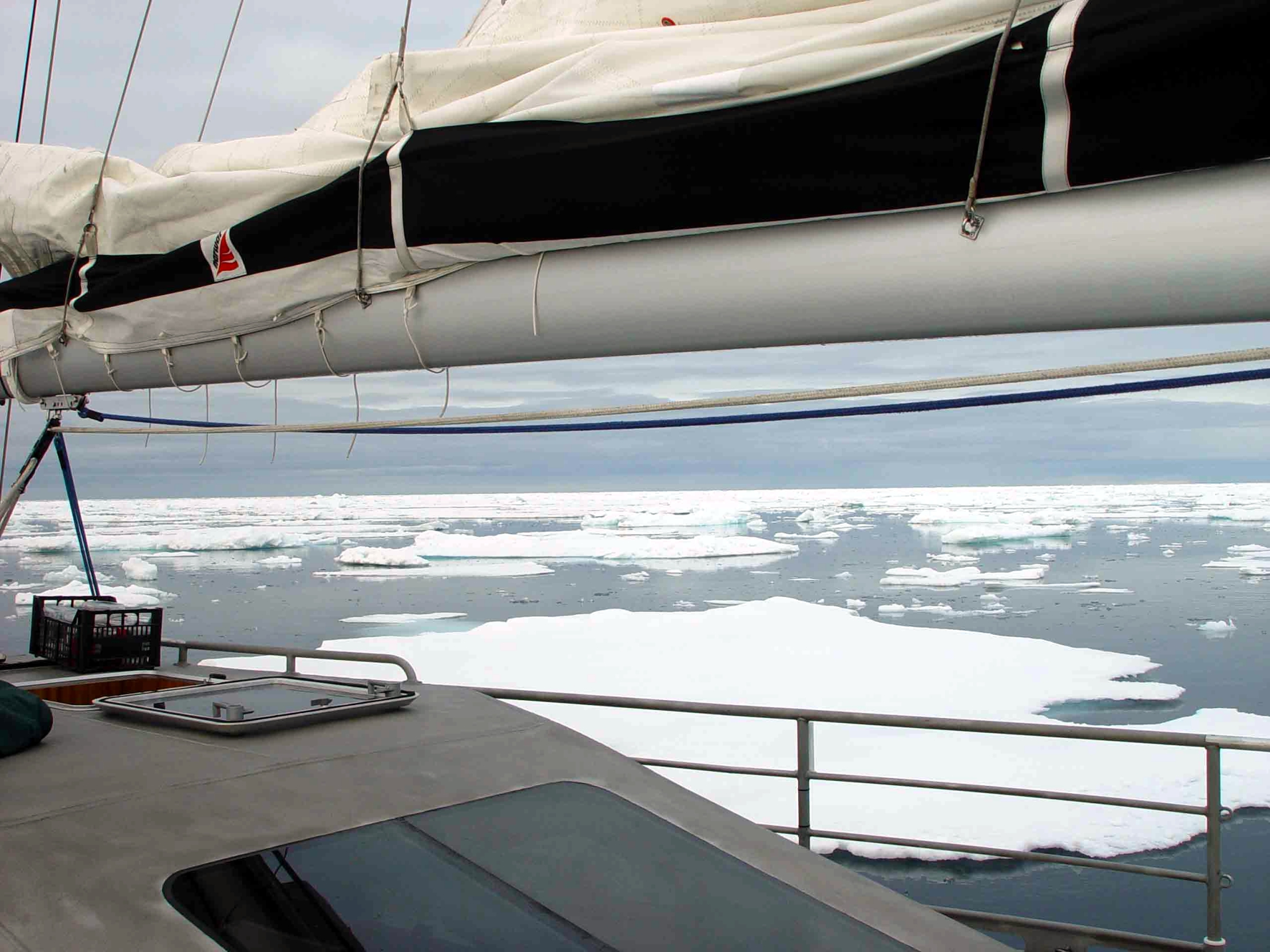 Date: 23.08.2014, time: 1200 UTC;
Date: 23.08.2014, time: 1200 UTC;Latitude: 78°33´N; Longitude: 1°13´E; Wind: 340°, 8 kn; Sea state: 1 (by TN-74); Clouds: 0 (by TN-74); Ice: 50%; CTD probe: surface, 5, 15, 30 m; Gulls 20, Little Auks, seals 8. Station #3 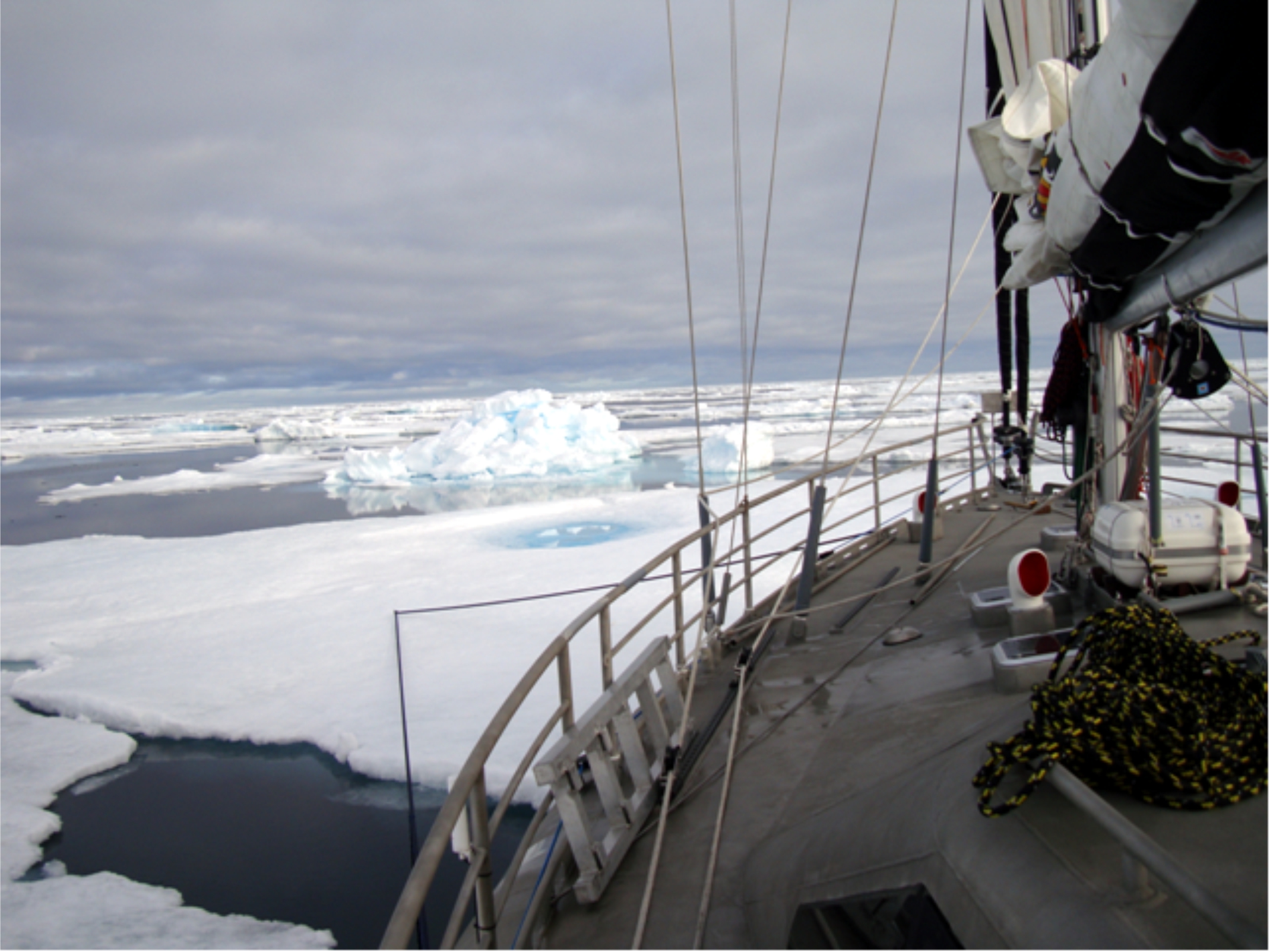 Date: 24.08.2014, time: 1100 UTC;
Date: 24.08.2014, time: 1100 UTC;Latitude: 78°05´N; Longitude: 1°26´W; Wind: 135°, 8 kn; Sea state: 0 (by TN-74); Clouds: x (by TN-74); Ice: 50%; CTD probe: surface, 5, 15, 30 m. Station #4 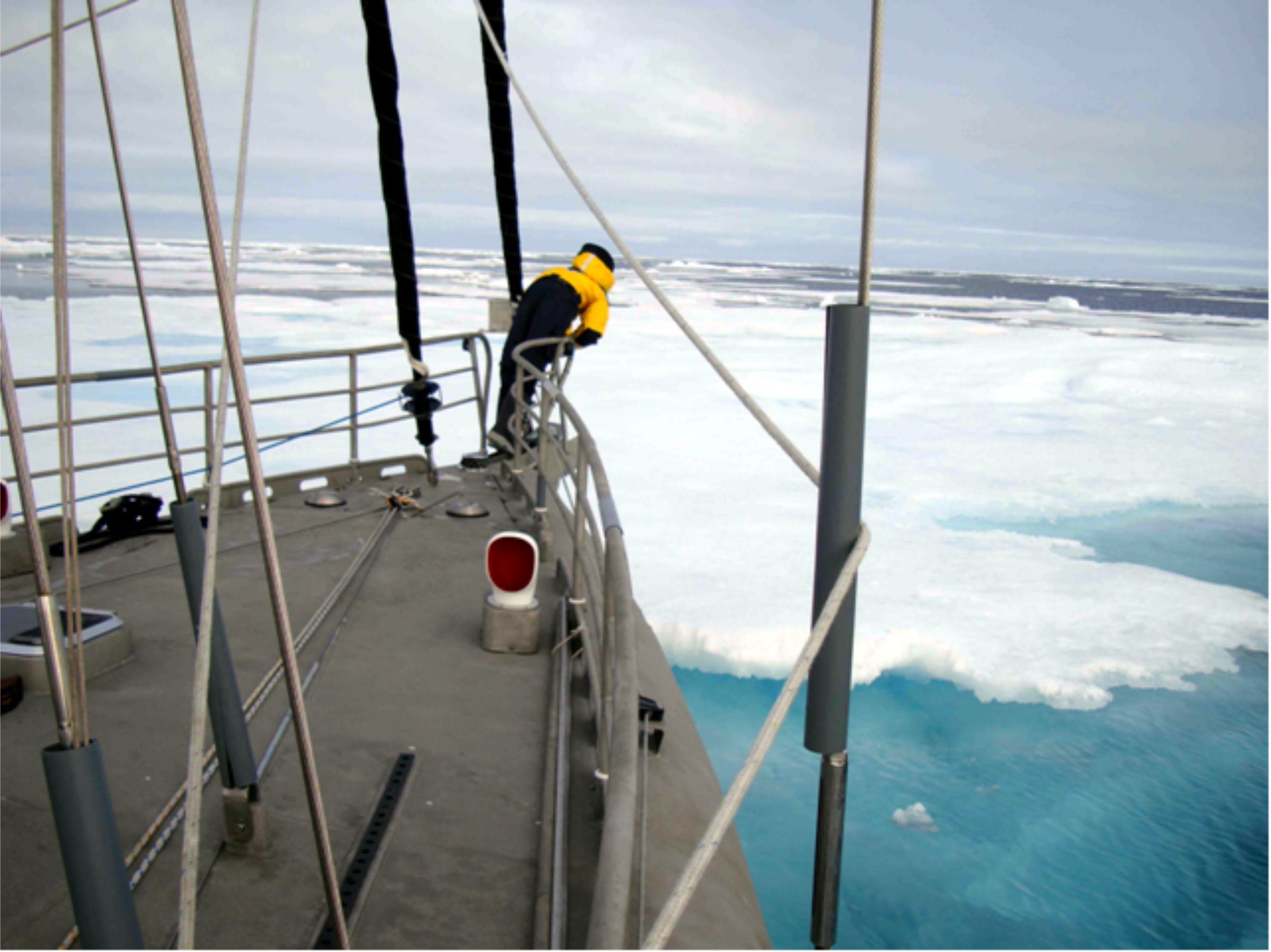 Date: 26.08.2014, time: 1400 UTC;
Date: 26.08.2014, time: 1400 UTC;Latitude: 76°52´N; Longitude: 5°24´W; Wind: 090°, 14 kn; Sea state: 2 (by TN-74); Clouds: x (by TN-74); Ice: 30-50%; CTD probe: surface, 5, 15, 30; Little Auks, gulls, seals. Station #5a 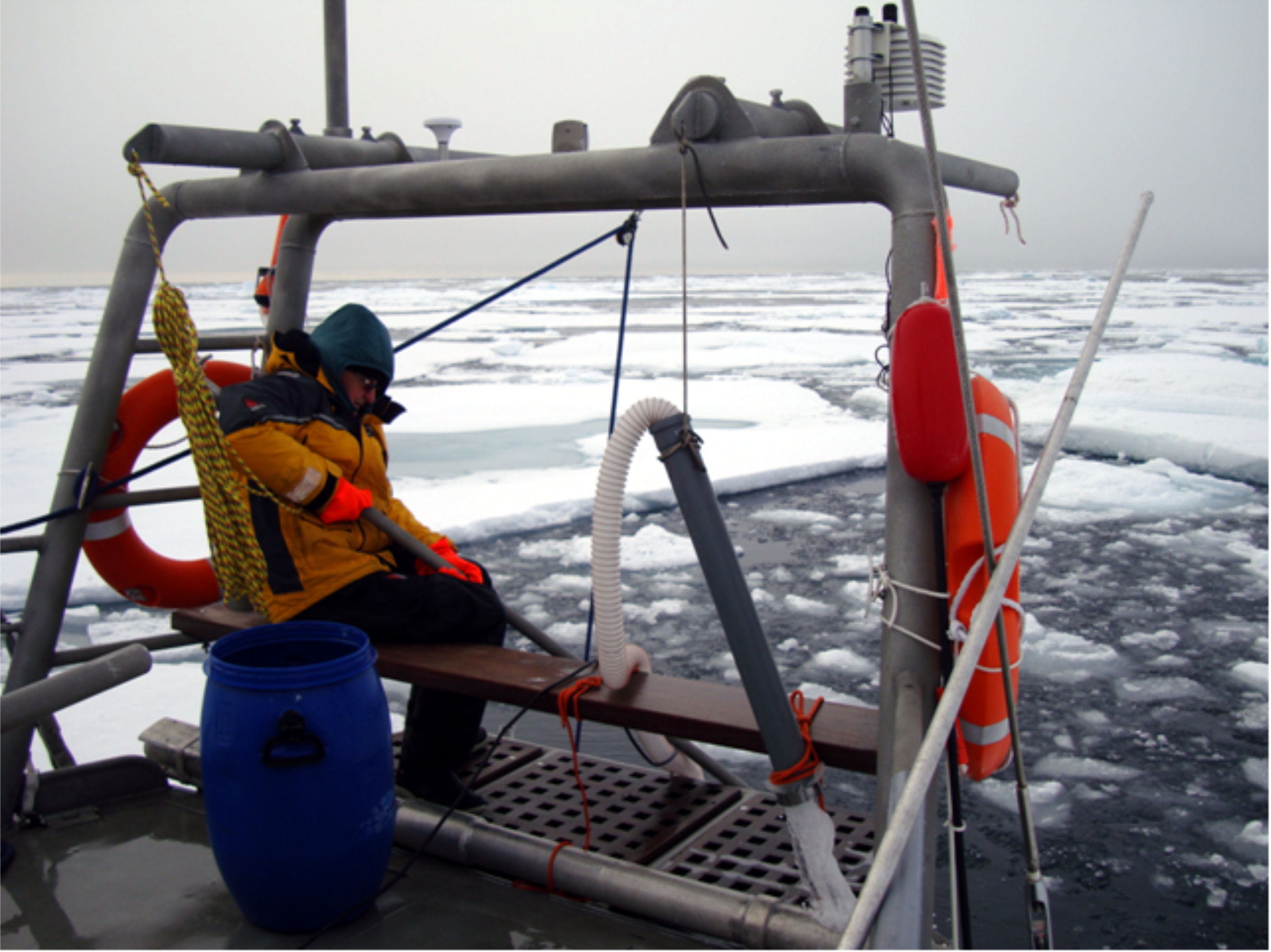 Date: 02.09.2014, time: 0135 UTC;
Date: 02.09.2014, time: 0135 UTC;Latitude: 79°56´N; Longitude: 9°52´E; Wind: 064°, 8 kn; Sea state: 1 (by TN-74); Clouds: x (by TN-74); Ice: 0%; CTD probe: surface, 5, 15, 30, 60 m; Notes: station on ice-free water, half a mile from the ice field.. Station #5 Date: 02.09.2014, time: 1000 UTC; Latitude: 80°00´N; Longitude: 9°45´E; Wind: 061°, 7 kn; Sea state: 1 (by TN-74); Clouds: x (by TN-74); Ice: 80%; CTD probe: surface, 5, 15, 30, 60 m; Notes: a strong current, CTD probe, WP-2 net, and pipes to pump water inclined at an angle of 45 °. Fifteen meters of pipe to pump - hooked into an ice floe and was lost. Unknown sample pumped from 30 m. Stations 5, 7, 8, 9 located within a short distance of each other in compact (80 to 95%) ice field. Stations 5a, 6 and 10 were located on open water, half a mile from compact ice edge. At stations 6, 7, 8, 9 and 10 samples of plankton filtered from pumped water were not taken. Zooplankton was only collected with a planktonic WP-2 net in accordance with instructions from the Institute of Oceanology PAN. Phytoplankton samples were collected with a 5l bathometer. Station #6 Date: 04.09.2014, time: 2100 UTC; Latitude: 81°00´N; Longitude: 15°49´E; Wind: 107°, 14 kn; Sea state: 3 (by TN-74); Clouds: x (by TN-74); Ice: open water, half a mile from compact ice edge; CTD probe: surface, 5, 15, 30, 60 m; A couple of whales were sighted. Station #7 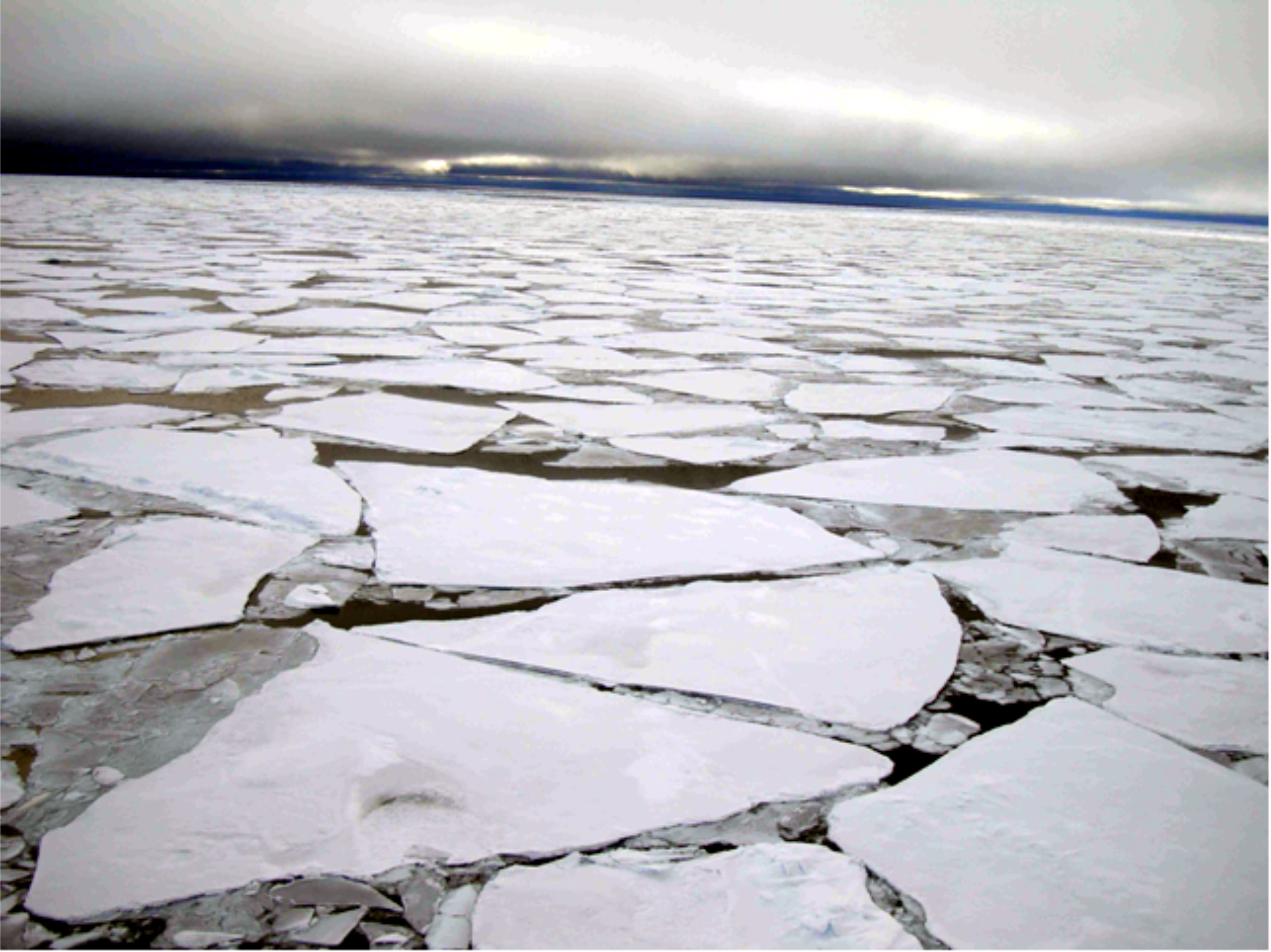
 Date: 05.09.2014, time: 1100 UTC;
Date: 05.09.2014, time: 1100 UTC;Latitude: 80°52´N; Longitude: 13°05´E; Wind: 250°, 10 kn; Sea state: 1 (by TN-74); Clouds: x (by TN-74); Ice: 50% ice pack; CTD probe: surface, 5, 15, 30, 60 m; On the edge of pack ice: seals, several Little Auks. Station #8 Date: 06.09.2014, time: 2300 UTC; Latitude: 80°40´N; Longitude: 12°44´E; Wind: 000°, 20 kn; Sea state: 1 (by TN-74); Clouds: x (by TN-74); Ice: 95% ice pack; CTD probe: surface, 5, 15, 30, 60 m. Station #9 Date: 07.09.2014, time: 1700 UTC; Latitude: 80°35´N; Longitude: 12°53´E; Wind: 268°, 16 kn; Sea state: 1 (by TN-74); Clouds: x (by TN-74); Ice: 95% ice pack, about 1 mile to water free of compact pack ice; CTD probe: surface, 5, 15, 30, 60 m; CTD probe and WP-2 net: line inclined to the surface of 60 °. Bathometer - vertically. At night, at 3am 08.09.2014 a polar bear tried to break onto the deck of the yacht trapped in the ice. He departed after 2 flare pistol shots in his direction. Station #10 Date: 08.09.2014, time: 0200 UTC; Latitude: 80°33´N; Longitude: 13°22´E; Wind: 270°, 20 kn; Sea state: 1 (by TN-74); Clouds: x (by TN-74); Ice: open water station, 0.5 miles from the edge of a compact pack ice; CTD probe: surface, 5, 15, 30, 60 m; CTD probe, WP-2 net and bathometer: rope inclined 45 ° to the surface of the water. Station description Most of the factors determining the time and place to establish the stations were not the results of planning but resulted from technical and logistic conditions in which we had to work. A more careful approach to the logistics and available equipment may in the future provide a more rational distribution of research stations both in time and space. Dates Station No. 1 was established at the end of July 2014, the remaining stations at the third decade of August and the first decade of September, 2014. Geographical location Station No. 1 was located farthest south and west, in the vicinity of Greenland. No. 2, 3, 4 stations were located in the western and central part of the Greenland Sea. Stations No. 5a, 5, 6, 7, 8, 9, 10 took place north of Svalbard. Ice condition No 1, 2, 3, 4 stations were established at the border of an ice field covering 30% to 60% of the sea surface. Stations 5a, 6 and 10 were established on the open sea at a distance of 0.5 nautical mile from the border of the ice field. Stations No. 5, 7, 8, 9 were established in dense ice covering up to 95% of the sea. Methodology Using a bathometer on the yacht is not burdensome for standard "quality" samples. For collecting "quantitative" phytoplankton samples, a large volume bathometer should be applied. A significant amount of water has to be filtered through the 10 micron net with a larger surface area to shorten the time of filtration. Conclusion This first voyage of the yacht indicates the fantastic research potential of a vessel like Magnus Zaremba. Better logistics, more complete and sophisticated equipment and a larger team of experienced researchers can deliver a wealth of scientific data, much richer than this introductory cruise brought back. Assuming a positive result of the scientific examination of these recently acquired planktonic and environmental data Magnus Zaremba would be available for a voyage to the Arctic in the ASIZ area between January and March. Winter research in the Arctic would be a test for the planned main task - the examination of the ice edge and ocean in the Southern Ocean during the Antarctic winter. Candidates for the crew of Magnus Zaremba cruises are requested to report to the captain at the following address: gienek moczydłowski @ gmail.com, or tel. (48) 603 75 11 55. We are also urgently looking for sponsors of the expeditions. We offer an attractive promotion program. Eugeniusz Moczydłowski Wólka Przybojewska, 8 November 2014 r. |
|
Nauka Obywatelska
strona sponsorowana przez Komitet Badań Morza
|
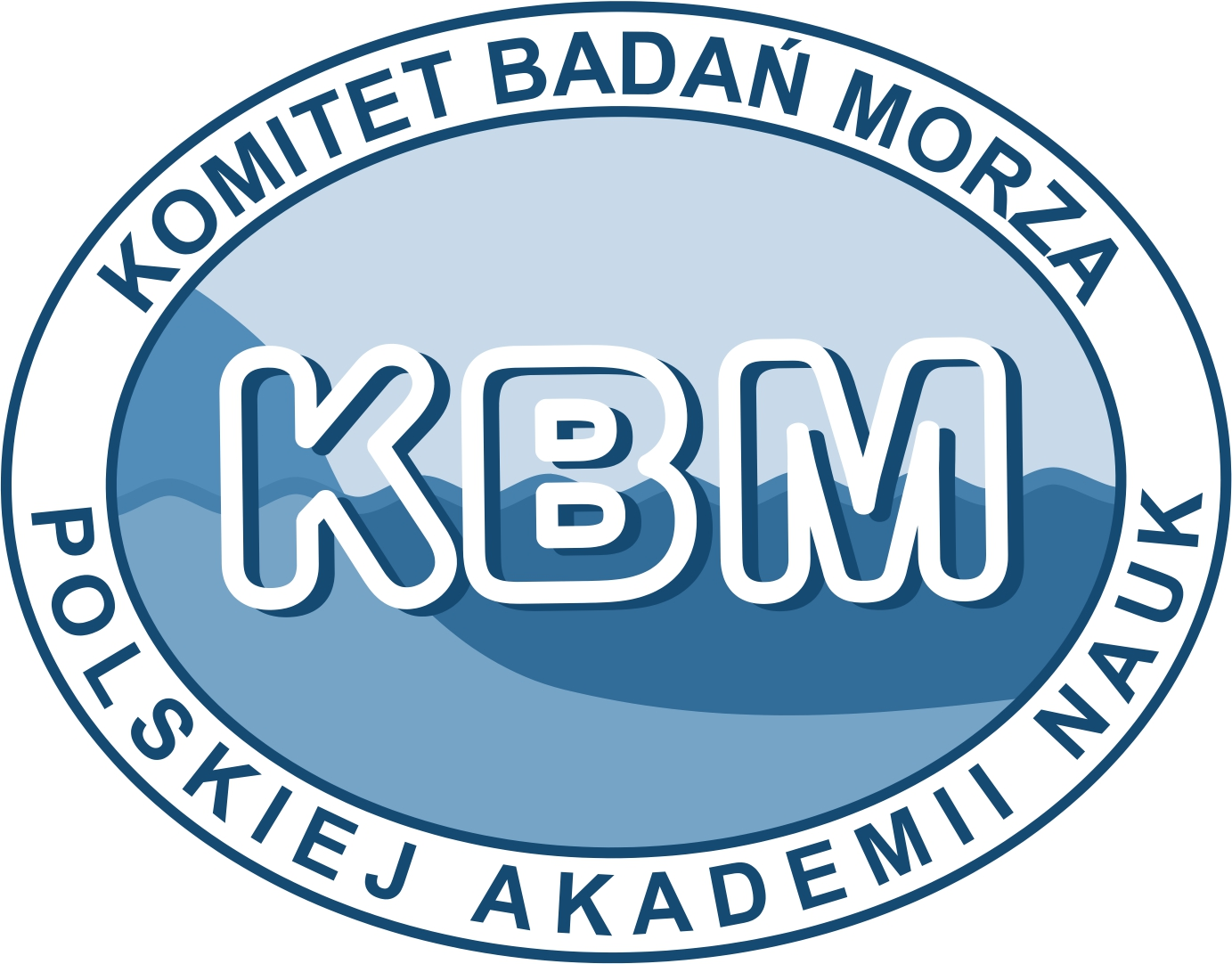 |
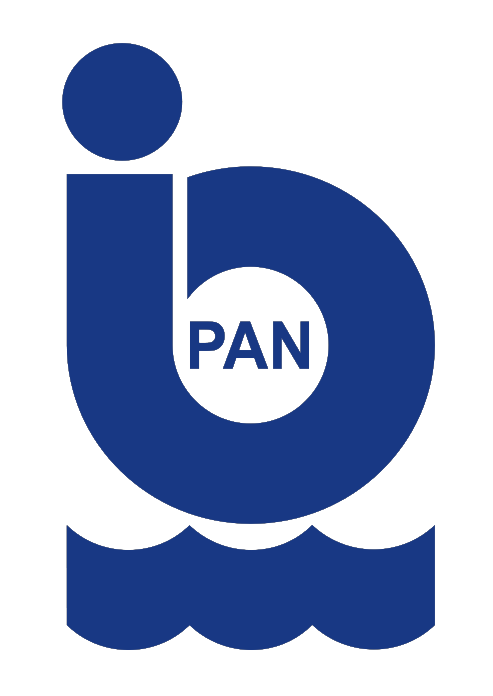 |
 po polsku |